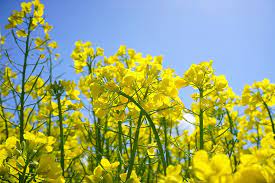
Firstly, introducing Auscrops, a wonderful market vending company bridging farmers and customers together through market vendors. Click here to find out more about How to Grow Mustard From Seeds as well fruit and vegetable offers.
How to Grow Mustard From Seeds
Growing mustard from seeds at home is not only an economical choice but also ensures that you have fresh mustard greens to add to your dishes. The best part about growing mustard is that it isn’t a very challenging task and can be done by anyone, even if you have limited gardening experience. In this comprehensive guide, we’ll take you step-by-step through the process of growing mustard from seeds.
Choosing the right seeds:
The first step in growing mustard seeds is choosing the right type of seeds. Mustard plants come in varieties such as brown, black, and a mix of brown and yellow seeds. Choose seeds that are organic and not treated with chemicals. Selecting the right seeds is essential to assure that the plants are healthy and suitable for consumption.
Preparing the soil:
Mustard plants love well-drained soils that are rich in organic matter. If you are growing mustard in pots, use a potting mix with added perlite, vermiculite, or sand. Add compost to enrich the soil and balance the pH level. If you are using garden beds, prepare the soil by loosening it and removing weeds or rocks.
Sowing the seeds:
Sow the mustard seeds thinly in rows, spacing around 1/4 inches apart, and cover them with 1/8 inch of soil. Keep the soil moist but not waterlogged. If you’re using pots, place them in a sunny spot. If you are sowing in the garden, ensure that the plants get at least 6 hours of natural sunlight.
Caring for plants:
Once the mustard seeds have germinated, keep the soil moist and water them regularly. If you notice any pests or diseases, use organic sprays to treat them. Ensure that the plants get enough sunlight and keep them protected from harsh winds or frosts. Once the plants start to develop, add nitrogen-rich fertilizers to promote healthy growth.
Harvesting and storage:
Mustard plants are ready to be harvested as soon as they are mature enough to be eaten. The best time to harvest is in the morning when the plants are at their freshest. Cut the leaves from the stems close to the base, leaving the younger leaves to grow. Place the harvested mustard plants in a refrigerator wrapped in a damp towel or store cardboard boxes.
Conclusion:
Growing mustard from seeds is an easy and rewarding experience. The key to successfully growing mustard seeds is choosing the right seeds, preparing the soil correctly, sowing the seeds efficiently, and looking after the plants carefully.
Lastly, Click here to read similar articles.
 Français
Français 











